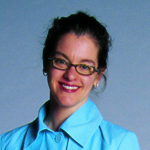Have you ever noticed how many people, places, things, and even a rather unattractive groundhog are designated and honored with a day, a month, or a year? Now, I am not putting down Punxsutawney Phil because I do want him to see his shadow and promise us an early spring. In our designation of things, we also should pay homage to values and causes that are important in our history and our health. I am glad that I am reminded every November of our Veterans on a special day or the Presidents who have served our nation. Certainly Dr. King’s birthday and Black History Month place an appropriate focus on issues that society is still working to solve.
So, I was delighted when I heard that February is Age-Related Macular Degeneration Month. More than any other eye disease AMD affects the largest number of people over 65 of European lineage. In fact, as I write this piece, over 15 million Americans are struggling within its dry form, currently an incurable condition. It’s projected that if we are not able to solve the riddle of AMD by the year 2050, the number of senior Americans with AMD will be more than 30 million.
The Discovery Eye Foundation is committed to finding the answer that will preserve the vision of millions of people. Right now research supported by DEF at the Gavin Herbert Eye Institute, University of California Irvine, Medical School is on the cutting edge of promising breakthroughs that could make the difference in the lives of so many.
Please join me in supporting this most worthy effort by contributing whatever you can to DEF and its important work. Our vision may depend on your generosity.


 Tom Sullivan
Tom Sullivan

 Lauren Hauptman
Lauren Hauptman